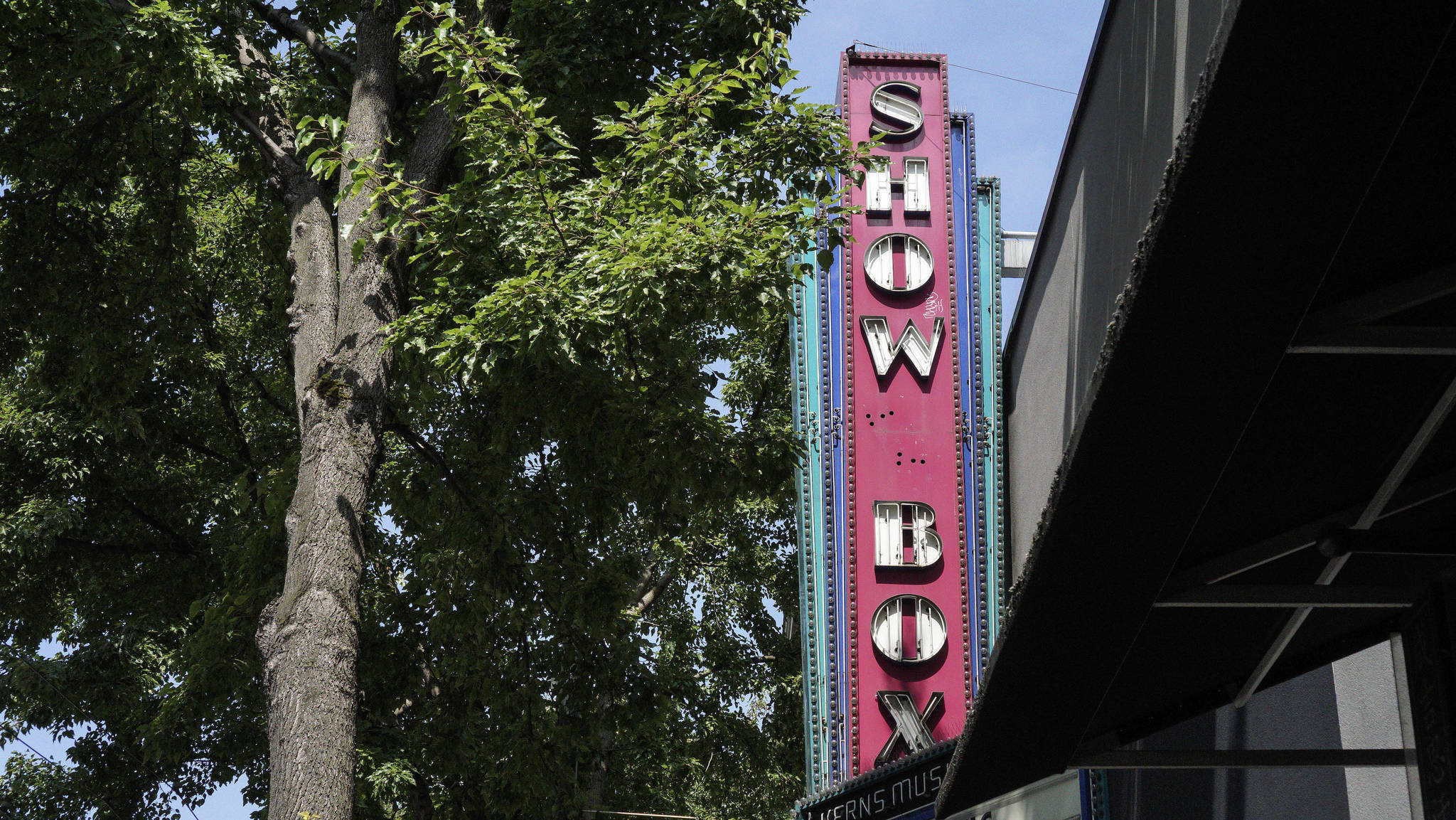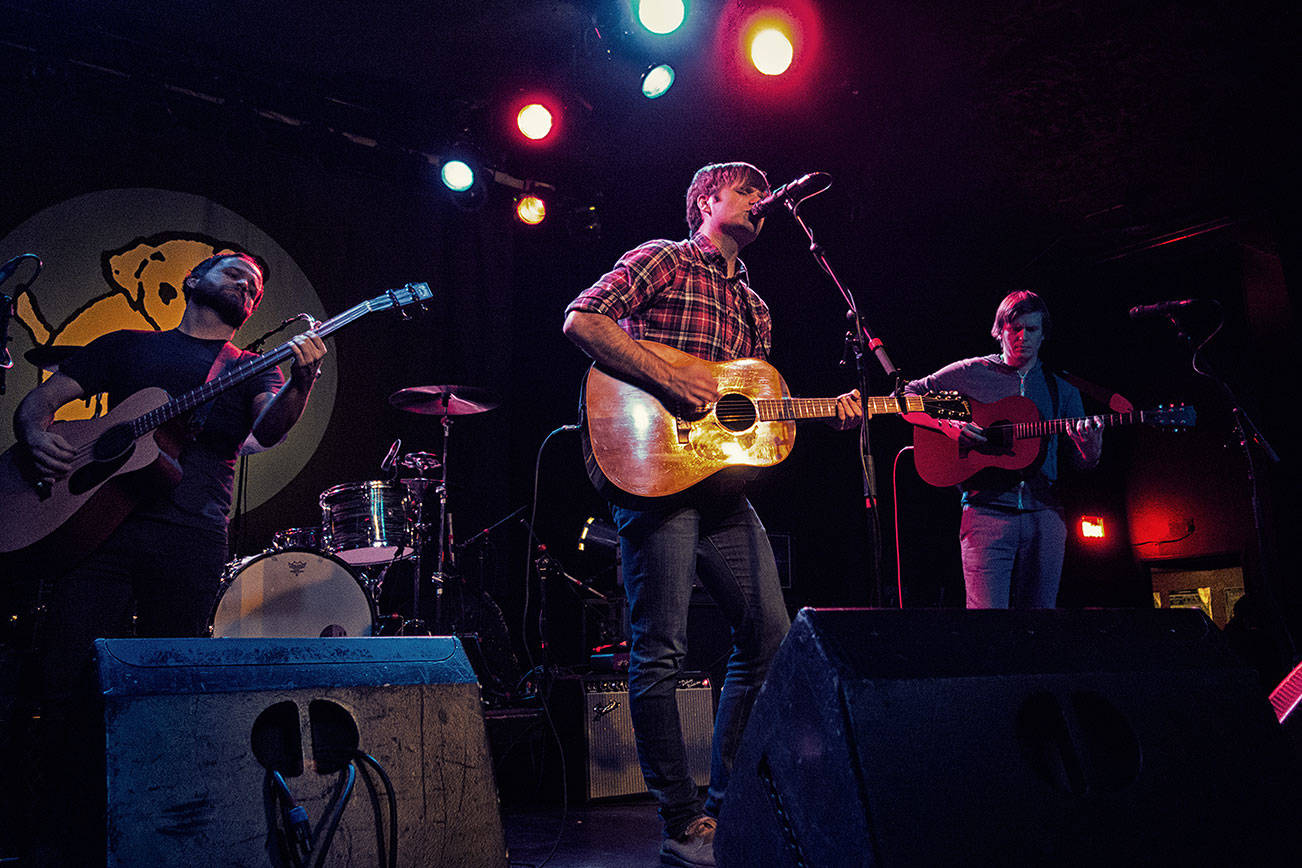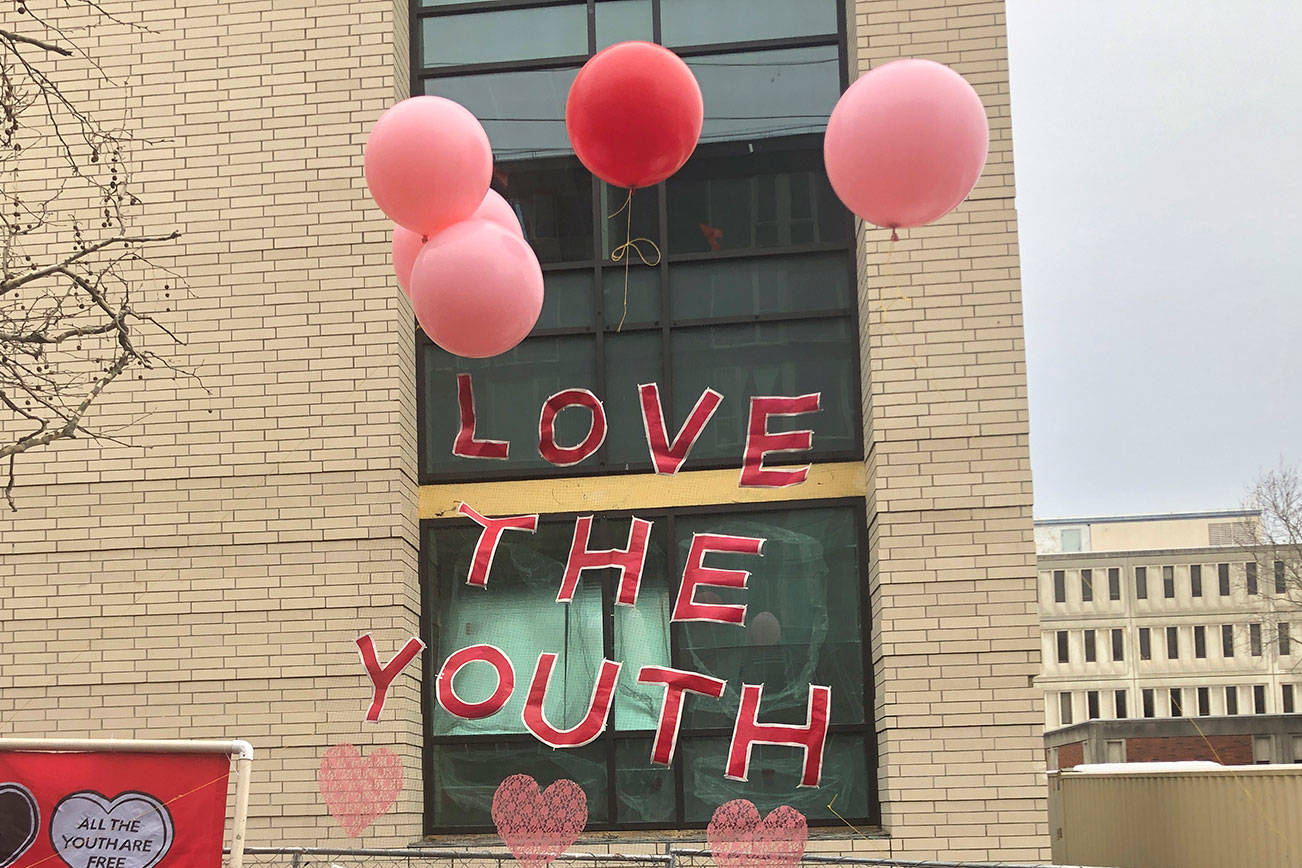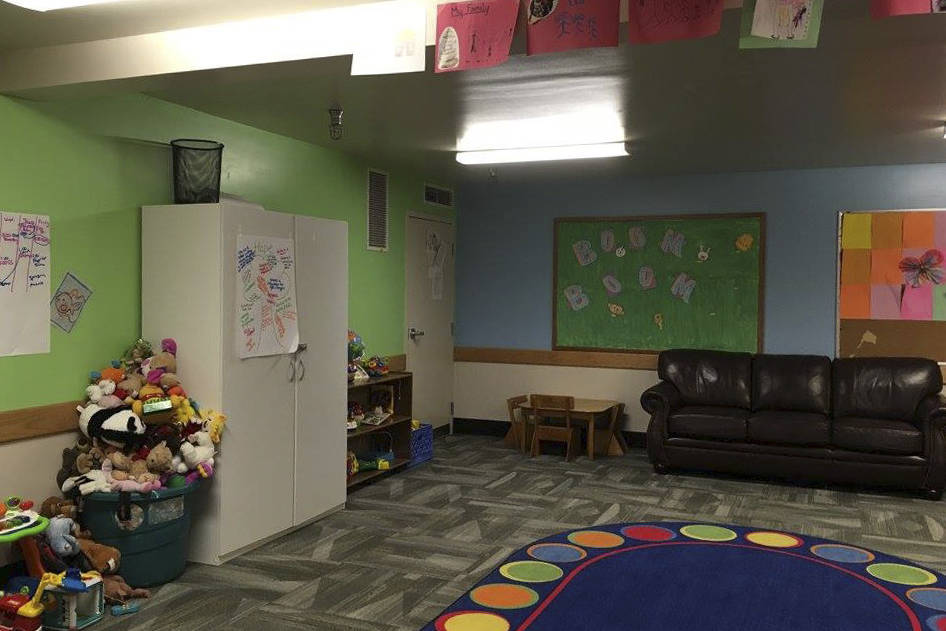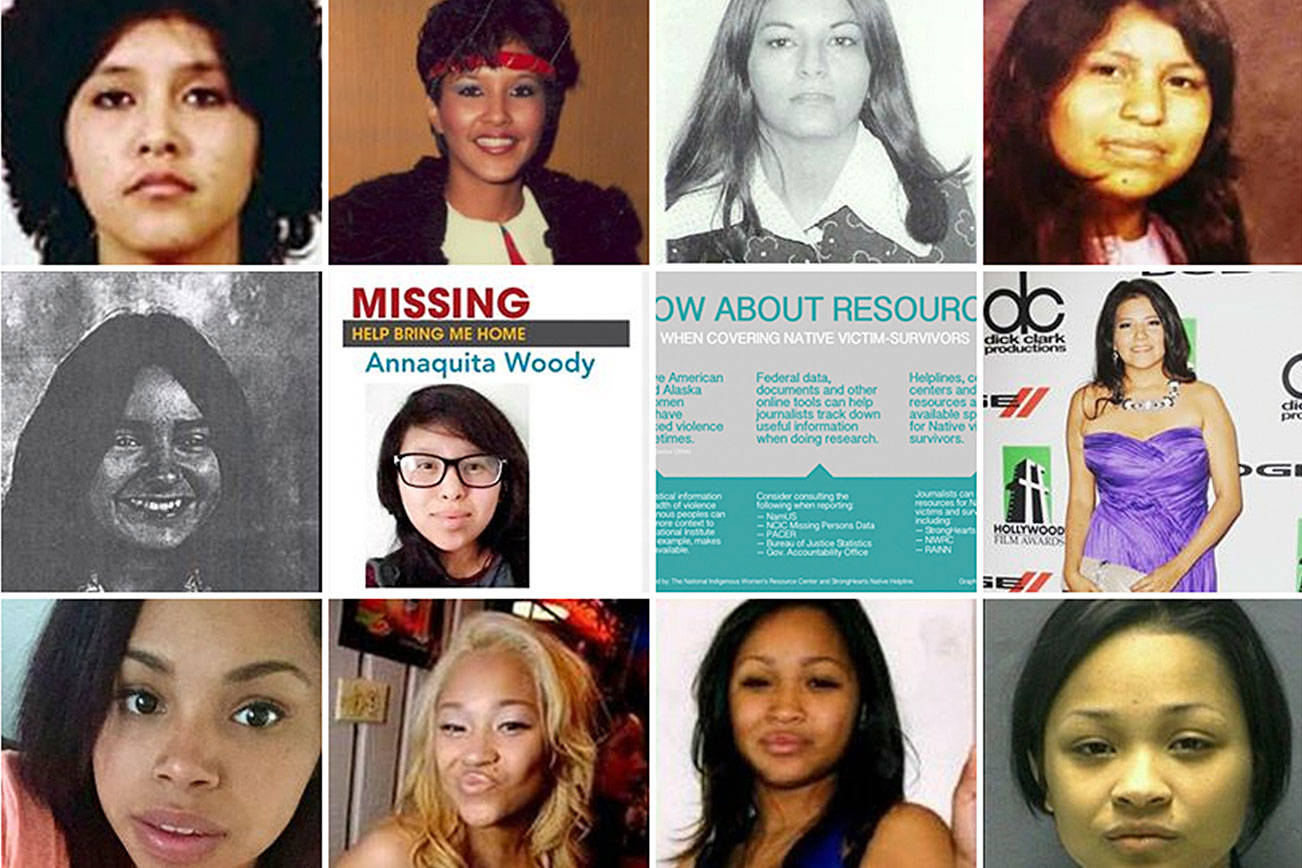Located across from Pike Place Market, the Showbox at the Market has stood the test of time for nearly eight decades, traversing the musical landscape from the syncopated beats of jazz to the sludge guitar sounds of the grunge era.
For Emily Nokes, lead singer of Seattle-based pop-punk band Tacocat, the music venue was formative during her early years in Seattle in the late 2000s. When Tacocat was still playing in Seattle basements, Nokes and two of her bandmates worked coat check at the Showbox, while their guitarist briefly served as a security guard there. The three-year gig exposed her to an array of bands that helped Tacocat forge their own unique sound. “There would be the metal shows, the all-night, no-alcohol teen raves,” Nokes recalled. “But then there was other incredible music, and it was always fun to be able to see a big show like that.” As they got older, Nokes and her bandmates traded hanging up coats for performing before large crowds at the 1,100-capacity theater.
Given her personal history with the Showbox and with many other bands, Nokes was aghast when a friend texted her Wednesday morning that the 79-year-old theater could be demolished to make way for a 44-story tower. “No way. Like no way,” she said. “I just did not think that that was possible … It just seemed kind of untouchable.”
While the Showbox at the Market has stood as a symbol of the area’s musical history, it’s now at the forefront of the omnipresent teardown-followed-by- redevelopment that’s sweeping the city. Politicians and bands near and far have expressed their dismay on social media since Wednesday, when The Daily Journal of Commerce broke the news about plans to build a mixed-use 442-unit apartment tower with 88 parking stalls on.
Although the developers have made their intentions clear, lengthy governmental procedures ensure that Showbox’s mortality date is not yet set in stone. On July 24, Vancouver, B.C.-based developer Onni Group filed a pre-application with the City of Seattle to begin the process of applying for a building and land-use permit, which would evaluate the potential building’s design and any environmental issues related to construction. In the filing, attorney Jack McCullough, who is working with Onni Group, listed the project’s value as $100,750,000. Along with the Showbox, the Blarney Stone Pub and Restaurant are also at risk of being demolished.
The pre-application doesn’t seal the Showbox’s fate just yet, but it does initiate a design-review pre-submittal conference with Seattle Department of Constructions and Inspections (SDCI) staff, which SDCI spokesperson Bryan Stevens told Seattle Weekly might occur in the next two to three weeks. At the conference, the staff will detail the permit process with the developer, and arrange an early design guidance application to start the design-review process. “[The conference] hasn’t been scheduled yet with our staff, but it does show movement toward some sort of development proposal on the site,” Stevens said. The developer has not filed a site plan at this time, Stevens clarified, adding that it’s too early to determine the timeline of the project. Onni Group has a history of proposing plans that it didn’t fully complete as proposed. The developer planned to build two 41-story apartment towers in Lake Union Tower, but instead decided to construct 880,000 square feet of office space, according to The Puget Sound Business Journal.
Following the conference, the developer will provide SDCI with an early design-guidance application that will outline the preliminary design material. The design-review process requires at least one open meeting in which developers will discuss the plan options before an SDCI board, giving the “public an opportunity to weigh in on the design of the site,” said Stevens. The review board then provides the developers with design guidance, and the architect will then file detailed plans with the city.
“This process will include working with the Department of Neighborhoods to nominate the structure as a Seattle Landmark,” Onni Group said in a statement emailed to Seattle Weekly. “The company looks forward to working with all stakeholders including the City and Landmark Preservation Board to determine the Landmark status of the building. During this process the Showbox Theatre will continue to operate under the management of AEG, which is the current tenant and operator of the Showbox Theatre.”
In the meantime, outraged patrons have launched petitions and Facebook events in the hope of saving the Showbox. One Facebook event entitled “Save the Showbox!” urged its over 9,300 “attendees” to write letters to Councilmember Kshama Savant and the Seattle Department of Neighborhoods’ City Historic Preservation Officer Sarah Sodt, requesting that they nominate the building as a historical landmark.
A Change.org petition requesting that the City of Seattle Landmarks Preservation Board and Sodt make the Showbox a historical landmark garnered over 40,000 signatures by Thursday afternoon, while a similar Care2 petition reached 4,400 supporters toward its goal of 5,000.
Critically acclaimed artists throughout the country who have performed at the Showbox joined the chorus of discontent to comment on the possible loss to Seattle’s musical fabric. Seattle mainstay Death Cab for Cutie tweeted: “We’re not going to take this lying down. The Showbox is an intrinsic part of what has made Seattle a focal point of American music for decades.” Macklemore also chimed in: “Seattle, we gotta save the Showbox.”
We’re not going to take this lying down. The Showbox is an intrinsic part of what has made Seattle a focal point of American music for decades.
We’re working on it – watch this space for information on how you can get involved in preventing this travesty from taking place. https://t.co/tL3b3HBn7D
— Death Cab for Cutie (@dcfc) July 26, 2018
Seattle, we gotta save the Showbox. Start with the petition. Ima do some more research…. https://t.co/vG174uvuaR
— GEMINI (@macklemore) July 26, 2018
Outside the local scene, Colin Meloy of The Decemberists and John Darnielle of the Mountain Goats both sent messages of support. Darnielle wrote: “the aggressive “growth”/destruction of great cities is so painful and awful.”
#SaveTheShowbox https://t.co/eu5P5rDxsB
— colin meloy (@colinmeloy) July 26, 2018
wow we have had a lot of great shows there. the aggressive "growth"/destruction of great cities is so painful and awful https://t.co/DlXltWKgDJ
— The Mountain Goats (@mountain_goats) July 25, 2018
Friends of Historic Belltown also took to Facebook to share the news in their most viral post to date. “The significance is primarily cultural, rather than architectural,” Friends of Historic Belltown member Steve Hall told Seattle Weekly. “It’s clear that the city values this—that there is public value in this business, and in the Showbox, in the history it represents, and in the future that people want it to have.”
The Showbox building’s tumultuous and rich history began in 1909, when it was a saloon and cafe until it closed in 1916 as a result of Prohibition, according to HistoryLink. The two-story building served as a market until a former circus performer and showbiz magnate bought the building in the late 1930s in the hope of creating a “Palace of the Pacific.” He and a theater designer transformed the building into a movie theater and art-deco nightclub replete with a 16-foot screen and several bars, which opened as the Show Box in 1939. During Seattle’s jazz boom, acts including Louis Armstrong and the Duke Ellington Orchestra played at the venue until financial hardships in the 1950s caused the venue to close twice. The space sat dormant for years until it served as a furniture showroom in the 1960s, then a hippie nightclub, and finally, in the late 1970s, a punk music hall. In its current iteration, the Showbox has hosted acts ranging from Soundgarden to Lorde.
As a native Seattleite, Hall was gutted to learn about the venue’s possible destruction during his daily reading of The Daily Journal of Commerce Wednesday morning. The Friends of Historic Belltown are currently gathering more information about development and spreading the news to members. Next, the organization plans to investigate historic-landmark designation, and to pursue negotiations with the developer. “As sad as it is to lose a building like this, potentially the developer realizing the public value held at this place, they could create something that at least helps to offset the loss of the Showbox,” Hall said. He foresees the possibility of a music venue being included in the tower, or for the addition of workforce housing. “It might sound not related, but we believe that the types of people who go to the Showbox, and maybe even perform there, are workforce people who are being pushed out of the city.”
The City of Seattle landmark-status nomination process begins when a group or organization submits an application to the Seattle Department of Neighborhoods, which is then reviewed by the City Historic Preservation Officer. Once the application is approved, the nomination will be considered by a 12-member volunteer board before a public meeting. To achieve this designation, a building must be at least 25 years old and meet at least one of six criteria delineated in the Seattle Landmarks Preservation Ordinance. The timeline varies, but it takes around two months to receive a nomination once an application has been determined adequate.
Despite the mass effort to grant the building preservational status, its future as a historical landmark is unclear. The project will trigger an environmental review since it proposes the removal of a building more than 50 years old, said SDCI spokesperson Stevens. Seattle’s Historic Preservation Program is overseen by the Seattle Department of Neighborhoods, which has conducted surveys on the historical significance of buildings at least 50 years old. A 2007 survey of the Showbox’s building deduced that the changes it underwent to become a theater rendered it with minimal historic features. “The building appears to lack sufficient physical integrity to convey architectural and/or historic significance,” the survey concluded.
A resolution urging the Landmarks Preservation Board to preserve Showbox’s interior and exterior is set to be introduced by Seattle City Councilmember Kshama Sawant next week.
“Big developers have immense power in Washington state, but one possible point of leverage are Seattle’s landmark preservation laws. Because the Showbox has so much historic value, the Landmarks Preservation Board should agree to landmark it if they hear from a large enough community of people,” Sawant said in a July 30 letter to her constituents. “The Onni Group, the corporation threatening the Showbox, has indicated they plan to nominate the building to the Landmarks Preservation Board. As a mega development corporation, Onni will no doubt hope that the Board will decide not to preserve any part of the building that will conflict with their multi-million-dollar development plans. We obviously hope, on the other hand, that Board will not just preserve the facade, but enable Seattle’s music community to continue to function at the venue. There are undoubtedly other locations where upscale apartments could be built, although what our city really needs is affordable housing.”
Other local politicians have already expressed their support for saving the Showbox. King County Executive Dow Constantine weighed in on Twitter: “Seattle with one more tower, but without the one and only Showbox, would be a Seattle diminished. Impoverished. We should not tolerate losing places like this. We will not.”
Change is happening all around us – some good, some bad, and some just unacceptable. The Showbox is more than a place to hear music. https://t.co/mF2afcvzgb pic.twitter.com/XJvT6kIH7A
— Dow Constantine (@kcexec) July 25, 2018
King County Councilmember Jeanne Kohl-Welles also sent out a statement. “I’m devastated to learn that there is a plan to demolish Seattle’s legendary and iconic Showbox Theatre. So much of our history as a community is rooted in the music and musical acts that have come from and have come through Seattle. From Duke Ellington to Pearl Jam to Macklemore, many moments in that theatre have been turned into lifelong memories,” wrote Kohl-Welles. “I am committed to working with the community and stakeholders to find a way to preserve this historical landmark so many more talented artists can continue to perform for generations to come.”
Update (July 31): The story has been amended to include Sawant’s proposed resolution to make the Showbox a historic landmark.
